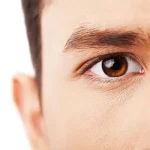Inherited Retinal Dystrophy (IRD) is a group of genetic disorders that affect the retina, the light-sensitive tissue at the back of the eye. These disorders cause progressive vision loss and can lead to blindness. IRD is usually inherited from one or both parents who carry the genetic mutation.
The symptoms of IRD vary depending on the specific type and severity of the condition. In general, individuals with IRD may experience difficulty seeing in dim light or at night (night blindness), loss of peripheral vision, and decreased visual acuity. This blog provides an overview of the causes, symptoms, and hereditary retinal dystrophy treatment options.
Understanding Retinal Dystrophy
Retinal Dystrophy refers to a group of genetic disorders that primarily affect the retina. The retina is a thin layer of tissue located at the back of the eye that is responsible for detecting light and sending visual signals to the brain. In individuals with Retinal Dystrophy, the retina does not function properly, leading to progressive vision loss.
There are different types of Retinal Dystrophy, including Inherited Retinal Dystrophy. It is caused by gene mutations that are passed down from parents to their children. These mutations affect the structure and function of the retina, leading to vision problems.
Retinal Dystrophy can manifest in various ways, including night blindness, loss of peripheral vision, and decreased visual acuity. The severity and progression of the disease can vary depending on the specific type of Retinal Dystrophy.
Understanding its underlying mechanisms is vital for developing effective hereditary retinal dystrophy treatments and interventions to slow down the progression of the disease and improve the quality of life for individuals with this condition.
What Causes Inherited Retinal Dystrophy?
Hereditary Retinal Dystrophy is primarily caused by genetic mutations that are passed down from parents to their children. These mutations can affect various genes that are essential for the normal functioning of the retina.
There are several different genes that can be involved in Inherited Retinal Dystrophy, and the specific gene mutation determines the type and severity of the condition. Some forms of Hereditary Retinal Dystrophy are inherited in an autosomal dominant pattern, while others are inherited in an autosomal recessive or X-linked pattern.
It is important to note that not everyone who carries a gene mutation associated with Inherited Retinal Dystrophy will develop the condition. Other factors, such as environmental influences and additional genetic variations, can also contribute to the development and progression of the disease.
Symptoms of Inherited Retinal Dystrophy
The signs and symptoms of Hereditary Retinal Dystrophy can vary depending on the specific type and stage of the disease. However, some common symptoms include:
- Night blindness
- Loss of peripheral vision
- Decreased visual acuity
- Sensitivity to light
- Color vision abnormalities
- Squinting of eye
- Nystagmus
It is important to note that the symptoms of Inherited Retinal Dystrophy may worsen over time as the disease progresses. Regular eye examinations and early diagnosis are crucial for effective management and intervention.
You can also read about Peripheral Vision Here
Different Forms of Inherited Retinal Dystrophy
Inherited Retinal Dystrophy encompasses a wide range of genetic disorders that affect the retina. Some of the different forms of Inherited Retinal Dystrophy include:
Retinitis pigmentosa: A group of disorders characterized by progressive degeneration of the retinal photoreceptors, mainly rods.
Leber congenital amaurosis: A rare genetic disorder that affects infants and young children, causing severe vision loss
Stargardt disease: A form of macular degeneration that typically begins in childhood or adolescence
Cone-rod dystrophy: A condition that primarily affects the cone cells in the retina, leading to color vision abnormalities and central vision loss
Usher syndrome: A genetic disorder that causes both hearing and vision loss
These are just a few examples of the different forms of Inherited Retinal Dystrophy. Each type has its own unique characteristics and progression patterns.
Diagnosis of Inherited Retinal Dystrophy
Diagnosing Hereditary Retinal Dystrophy typically involves a comprehensive eye examination, including a visual acuity test, visual field test, and evaluation of the retina using specialized imaging techniques.
Genetic testing plays a crucial role in the diagnosis and management of Inherited Retinal Dystrophy. It helps identify the specific gene mutation responsible for the condition, which can provide valuable information about the prognosis and potential hereditary retinal dystrophy treatment options.
While there is currently no cure for Inherited Retinal Dystrophy, there are management strategies available to slow down the progression of the disease and improve visual function. These may include:
- Low vision aids: Devices and techniques to maximize remaining vision
- Vision rehabilitation: Training and support to help individuals adapt to vision loss
- Gene therapy: Experimental treatments aimed at correcting the underlying genetic mutation
- Clinical trials: Participation in research studies to test new treatments
Early intervention and regular monitoring by an ophthalmologist specializing in inherited retinal disorders are key to optimizing visual outcomes and quality of life for individuals with Inherited Retinal Dystrophy.
Treatment Options for Retinal Dystrophy
While there is no cure for it, there are inherited retinal disease treatment options available to manage the symptoms and slow down the progression of the disease. Some of the hereditary retinal dystrophy treatments include:
Vitamin A supplementation: Some forms of Inherited Retinal Dystrophy may benefit from high-dose vitamin A supplementation, which has been shown to slow down the progression of vision loss in certain cases.
You can read more about Eye Benefits of Vitamin A here.
Retinal implants: In some cases of advanced Retinal Dystrophy, retinal implants or prosthetic devices can be used to restore partial vision by stimulating the remaining healthy retinal cells. It is currently under research and not available.
Gene therapy: Experimental treatments are being developed to target specific gene mutations associated with Inherited Retinal Dystrophy, with the aim of restoring or improving retinal function.
Stem cell therapy: Researchers are investigating the potential of using stem cells to replace damaged retinal cells and restore vision in individuals with Inherited Retinal Dystrophy.
It is important to consult with an ophthalmologist or a retinal specialist to determine the most appropriate treatment options based on the specific type and stage of Inherited Retinal Dystrophy.
Why Is Genetic Testing for Inherited Retinal Dystrophy Important?
Genetic testing plays a crucial role in the diagnosis and management of Inherited Retinal Dystrophy. Here are some reasons why genetic testing is important:
- Accurate diagnosis: Genetic testing can help identify the specific gene mutation responsible for Inherited Retinal Dystrophy, which can provide an accurate diagnosis and help determine the most appropriate treatment options.
- Prognostic information: Genetic testing can provide valuable information about the expected progression and severity of the disease, allowing for better management and planning.
- Carrier testing: Genetic testing can determine if an individual is a carrier of a gene mutation associated with Inherited Retinal Dystrophy, which is important for family planning and genetic counseling.
- Clinical trial eligibility: Genetic testing may be required to determine eligibility for participation in clinical trials investigating new treatments for Inherited Retinal Dystrophy.
Overall, genetic testing is essential for personalized management and care of individuals with Hereditary Retinal Dystrophy.
Risk Factors and Complications of Retinal Dystrophy
In addition to the genetic factors involved in Inherited Retinal Dystrophy, there are some risk factors and potential complications to be aware of:
Age: Retinal Dystrophy can occur at any age, but some forms are more common in certain age groups. For example, Stargardt disease typically begins in childhood or adolescence.
Family history: Having a family history of Inherited Retinal Dystrophy increases the risk of developing the condition.
Environmental factors: Some environmental factors, such as exposure to certain toxins or excessive sunlight, may contribute to the development or progression of Retinal Dystrophy.
Complications: The progressive degeneration of the retina can lead to significant vision loss and blindness. In some cases, Retinal Dystrophy may also be associated with other health issues, such as hearing loss in Usher syndrome.
Why Choose Centre For Sight?
Choosing Centre For Sight for inherited retinal dystrophy ensures expert care from highly trained specialists using cutting-edge diagnostic technology and innovative inherited retinal disease treatment like gene therapy. The center offers comprehensive, patient-centered care, including genetic counseling and support services, and is committed to ongoing research and clinical trials, providing patients access to the latest advancements in retinal health.
FAQs
What is an inherited disease of the retina?
An inherited disease of the retina refers to a group of genetic disorders that affect the structure and function of the retina, leading to progressive vision loss.
How common is IRD?
The prevalence of Inherited Retinal Dystrophy varies depending on the specific type of the condition. Some forms, like Retinitis pigmentosa, are relatively common, while others may be rare.
Is there a cure for IRD?
Currently, there is no cure for Inherited Retinal Dystrophy. However, there are treatment options available to manage the symptoms and slow down the progression of the disease.
Can IRD be prevented?
Since Inherited Retinal Dystrophy is primarily caused by genetic mutations, it cannot be prevented. However, genetic counseling and testing can help individuals understand their risk and make informed decisions.
What are the different types of IRD?
Inherited Retinal Dystrophy encompasses various types, including Retinitis pigmentosa, Leber congenital amaurosis, Stargardt disease, Cone-rod dystrophy, and Usher syndrome, among others.
What kind of vision loss can I expect with IRD?
The type and severity of vision loss in Inherited Retinal Dystrophy can vary. Some individuals may experience night blindness, loss of peripheral vision, decreased visual acuity, or color vision abnormalities.
How can I manage daily life with IRD?
Managing daily life with Inherited Retinal Dystrophy may involve using low vision aids, seeking vision rehabilitation services, and making necessary adaptations to the living environment.





